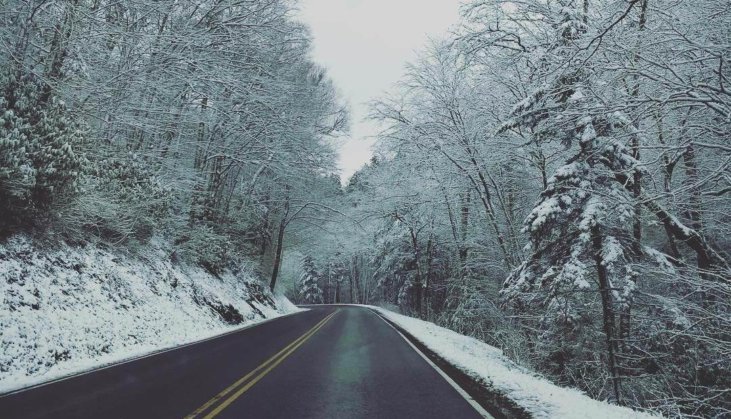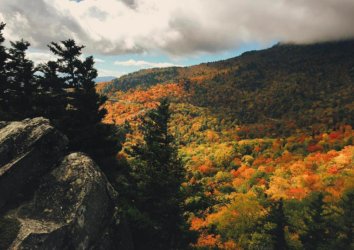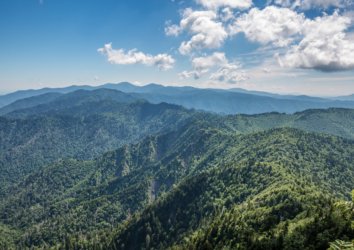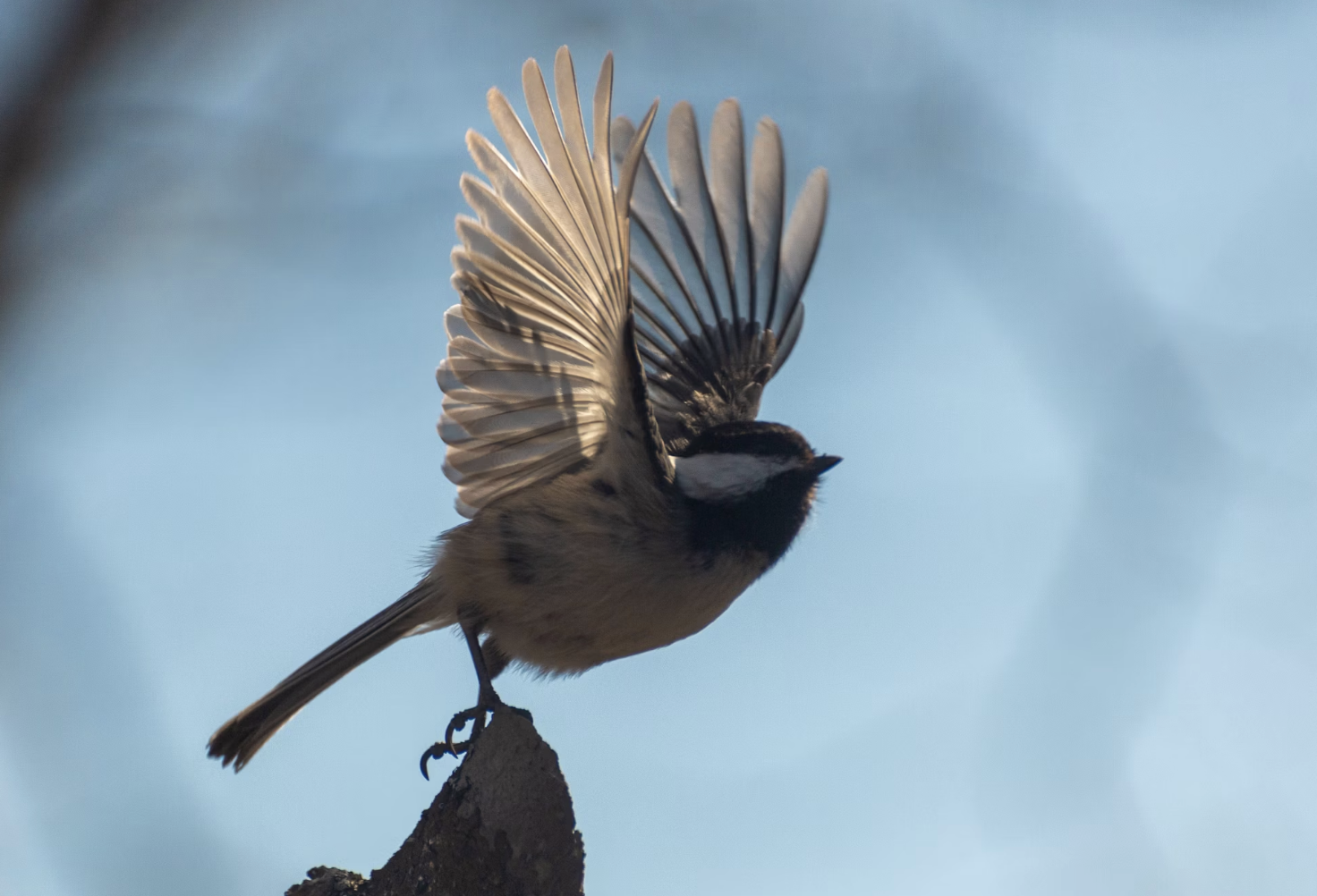Great Smoky Mountains National Park may see the bulk of its 10-plus million annual visitors in summer and fall, but it’s open all year round and wintertime is altogether magical here. Having a bit more elbow room in this most popular national park in the U.S. is a major draw in and of itself, but the season also comes packed with scenic splendor and no shortage of recreational opportunities.
Read on for an overview of Great Smoky Mountains National Park in winter mode, including good hikes and other adventures, packing essentials, and tips for getting the latest info on road and trailhead conditions.
The Wintry (or Not-So-Wintry) Great Smoky Mountains
Compared to many mountain regions on the continent, the Great Smokies are quite balmy in winter, but their significant elevation means higher ridges and summits experience substantially colder temperatures and heavier snowfall than low foothills and valleys. December-through-February high temperatures in Gatlinburg, Tennessee at the northern foot of the range average around 50 degrees Fahrenheit and lows about 28 degrees; up on Mount Le Conte, the third-highest Smoky Mountain peak at nearly 6,600 feet, winter highs tend to max out in the mid to upper 30s and lows are often in the upper teens. But the Great Smokies high country may plunge well below zero during cold snaps.

According to the National Park Service, about half of the winter days in the Great Smoky Mountains National Park see high temperatures of 50 degrees or greater, with lows typically at or below freezing. You might be surprised how many winter afternoons hit the 60s or even 70s.
What about snow? Low elevations in the park see a handful of snowfalls of an inch or more on average each winter, while higher elevations get more frequent and heftier amounts of the white stuff. More than five feet of snow falls annually at Newfound Gap (5,046 feet), set along the Great Smoky Mountain divide roughly in the center of the park.
Remember that, particularly in the high country, conditions in winter can change quickly, and rain can morph into sleet or snow on a dime.
Winter Maintenance & Access in Great Smoky Mountains National Park
As long as the weather cooperates, US-441 (Newfound Gap Road), Little River Road, and the Cades Cove Loop Road in the national park stay open throughout the winter. The Newfound Gap Road does close temporarily because of wintry conditions on the order of 15 to 20 times each season. Secondary park roads, including Clingmans Dome Road, Little Greenbrier Road, Parsons Branch Road, and Roaring Fork Mountain, seasonally close in the fall and reopen in the spring.
Of the park’s 10 developed campgrounds, Cades Cove, Elkmont, and Smokemont stay open all year. Experienced winter recreationists can camp at backcountry campsites, to boot. As far as picnic areas go, the Cades Cove, Deep Creek, Greenbrier, and Metcalf Bottoms locations are open in winter. The Cades Cove, Sugarlands, and Oconaluftee visitor centers are, too, serving as their own fun and illuminating destinations when the weather’s not all that conducive to outdoor activities.
For the latest information on road conditions, check the Great Smoky Mountains National Park website or call (865) 436-1200.
Winter Hiking & Other Outdoor Recreation in Great Smoky Mountains National Park
Winter is a fabulous time to hit the trails in Great Smoky Mountains National Park, as long as you’re prepared. Routes that are jam-packed in summer can be deliciously tranquil this time of year, and from ice-glazed creeks and cascades to whitened mountaintops the scenery’s topnotch.
Depending on a given winter’s conditions and the location, trails may be completely snow-free, a bit ice-crusted, or all-out buried in drifts. It’s a good idea to use trekking poles or walking sticks this time of year to keep your balance on snowy or icy paths; those heading for higher elevations may want to pack strap-on crampons. Very often, you’ll find snow-free conditions on lower trails.
Be sure to pack plenty of layers for your winter hike plus emergency essentials such as a first-aid kit, signaling devices, a cell phone, extra food and water, and a good map and compass. A layering system—with a moisture-wicking base layer, insulating mid-layer(s), and a wind- and water-resistant shell—allows you to respond to changing weather conditions and generally thermoregulate. All else being equal, it’s better to go with the minimum layers when you’re huffing and puffing on the trail so you don’t sweat excessively, which can quickly cool you down when you stop for a snack or water break; throw on a vest, sweater, or jacket when you take a breather to keep from getting chilled.

Charlies Bunion
Laurel Falls Trail is a great choice for a winter hike on account of its paved nature and the spectacular ice formations that often accumulate in the two-tiered waterfall. Similarly, the Alum Cave Trail can provide fantastic views of ornate icicles on Alum Cave Bluff; ambitious winter hikers can continue to the snowed-over summit of Mount LeConte.
Other worthwhile winter trails include the treks to Andrews Bald and Charlies Bunion, both of which offer expansive vistas.
Closed to motor vehicles in winter, Clingmans Dome Road becomes a snowy playground this time of year, popular among winter hikers, snowshoers, and cross-country skiers alike. Other seasonally closed roads, such as the Roaring Fork Motor Nature Trail and Forge Creek Road, can be great for walking (or—if snowy—snowshoeing or skiing).

Clingmans Dome
Along with the above-mentioned resources for inquiring about current road conditions, consider contacting the Backcountry Trails Office at (865) 436-1297 to find out about trailhead access.
Experience the Singular Beauty & Rich Outdoor Recreation of the Great Smoky Mountains in Winter
With the proper planning and packing, a winter visit to Great Smoky Mountains National Park is a chance to see one of the defining landscapes of the U.S. as many never do. Whether you’re enjoying the quiet of a winter forest path or closed road or taking a strenuous but rewarding adventure up to snowy vantages in the heights, it’s an entrancing time of year in this Southern Appalachian wonderland!
Interested in learning more? Check here to see these 8 Tips for a Hassle-Free Winter Visit to the Smokies!




